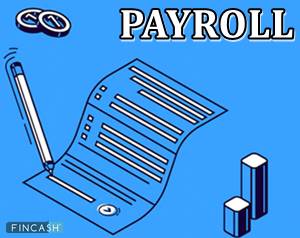
Table of Contents
What is Payroll in HR?
Payroll refers to the compensation that a business is bound to pay its employees for a fixed period. Usually, the HR team or Accounting department manages the payroll, but it can be handled directly by the owner or associate in smaller businesses.

For most companies, payroll is the most significant expense.
Employee Payroll
Payroll is the process of paying a company's employees, which generally includes calculating hours worked, tracking employees' pay, and distributing payments through direct deposit to employee Bank accounts or cheques.
Indian Payroll Process Steps
Careful planning is necessary with payrolls as it is an ongoing task. Continuous attention is always required, and there is a constant need to monitor changes in withholdings, contributions to funds, etc. Here are the three stages of payroll processing-
1. Pre-Payroll
Characterising Payroll Policy
The net adds up to be paid and impacted by different elements. The organisation's different strategies like compensation, leave and advantages, participation, and so on become integral factors. As an initial step, such a strategy should be clear-cut and endorsed by the administration to guarantee standard finance handling.
Gathering Inputs
The finance process includes interfacing with different divisions and faculty. There can be data like mid-year compensation amendment information, participation information, etc. These data sources are obtained from solidified or fewer groups in more modest associations.
Input Validation
Whenever inputs are received, you should check for the legitimacy of the information concerning adherence to organisation strategy, approval/endorsement framework, suitable configurations, etc. It would help if you likewise guaranteed that no dynamic worker is passed up a significant opportunity and that no idle representative records are incorporated for payment instalments.
Talk to our investment specialist
2. Actual Payroll Activities
Payroll Formula
The confirmed input data is entered into the payroll system for further processing. After adjusting for appropriate Taxes and other deductions, the net pay is the outcome. It includes:
- Calculating the gross pay of the employee, which is equal to hourly rate x total hours worked. Or, yearly pay/number of pay per year
- Make all the pre-tax deductions, including savings accounts, insurance plans, etc
- Deduct the taxes as applicable over the amount left
- Finally, the net payroll to be paid to the employee is achieved
3. Post Payroll
Statutory Compliance
At the processing time of payroll, all statutory deductions, such as Employee Provident Fund (EPF), Tax Deduction at Source (TDS), etc., are deducted. After that, the organisation sends the amount to the appropriate government agencies.
Payroll Accounting
All the financial transactions are recorded on file by every organisation. Checking that all salary data is input appropriately into the accounting or ERP system is an essential element of payroll management.
Payout
Salary might be paid in cash, cheque, or bank transfer. Employees are usually given a salary bank account by their employers. After you've finished payroll, double-check that the company's bank account has enough money to cover the salary payment.
Payroll Login
This step is essential if you use payroll management software. In that case, you need to log in to your account and fill in the payroll details along with the employee data for further processing.
Payroll Information Reporting
After you've completed a payroll run for a given month, the finance and top management teams can request reports such as department-by-department employee costs, location-by-location employee costs, etc. As a payroll officer, it's your job to delve into the data, extract the necessary information, and provide reports.
Payroll Example
Let's say an employee is paid Rs. 200 per hour. Their employer pays them every two weeks. The employee worked for 30 hours the first week and 35 hours the following week, totalling 65 hours for the pay period. As a result, the employee's gross compensation is Rs. 13,000. Now, suppose he has to pay Rs. 3,000 for insurance plans, and there is an Rs. 500 Deduction of taxes from his gross pay.
His net payroll will be Rs. 9,500.
Conclusion
Payroll mistakes happen very quickly. Take a moment, think about the workers, employees for whom monthly salary is the only source of Income. Suppose salary is not paid with time. These irregularities can take a toll on the employees' morale and affect the business's productivity. Ensuring timely salary payment is important, also adhering to the various rules and regulations such as labour law. It would help if you had a proper understanding of payroll and its run.
All efforts have been made to ensure the information provided here is accurate. However, no guarantees are made regarding correctness of data. Please verify with scheme information document before making any investment.





